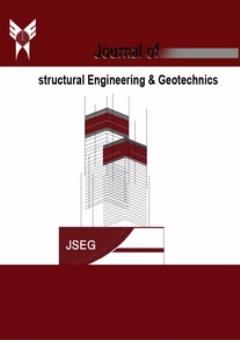-
-
List of Articles
-
Open Access Article
1 - New Approach for Approximation of Dispersivity in Porous Media
Mohammad Reza Fadaei Tehrani Raheleh Feizy Homayoun Jahanian -
Open Access Article
2 - Analysis of support pressure for stabilization of rock blocks in the Zaker tunnel
Vahid Hosseini Toudeshki -
Open Access Article
3 - Experimental Study on the Effect of Crumb Rubber on Shear Strength of Sandy Soil
Soheil Ghareh Seyed Vahid Mojtahed Sistani -
Open Access Article
4 - Effects of Using Multilayers of High Resistance AFRP on Loading Capacity of Reinforced Concrete Beams in Comparison with Low Resistance AFRP Considering EBROG Method
Bamshad Sadjadi Manizani Shahriar Tavousi Tafreshi Abbas Akbarpour Nikghalb -
Open Access Article
5 - Evaluation of the Effect of Connection between RC Shear Wall and Steel Moment Frame on Seismic Performance and Reduction Factor in Dual Systems
Ali Molaei Manzar Hassan Aghabarati -
Open Access Article
6 - Seismic Vulnerability assessment of concrete railway bridge using nonlinear analyses
Araliya Mosleh Hamed Hamidi Ahmad Nicknam José Jara Humberto Varum
-
The rights to this website are owned by the Raimag Press Management System.
Copyright © 2021-2025







